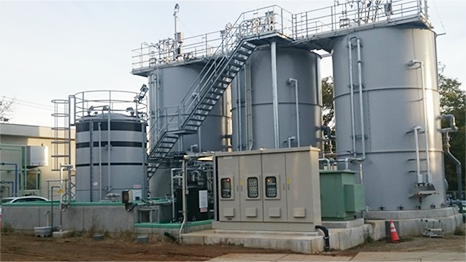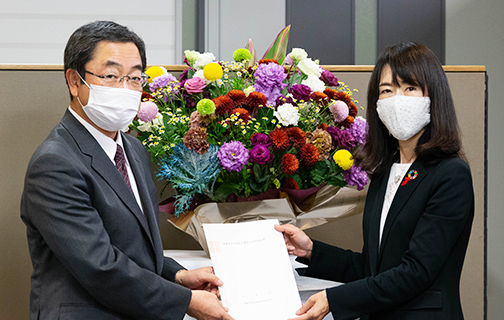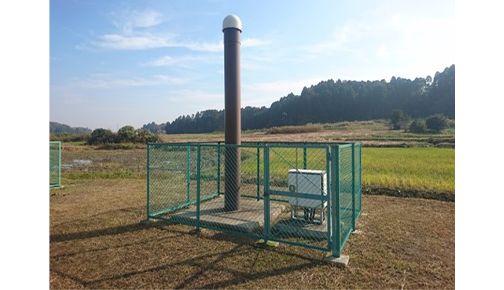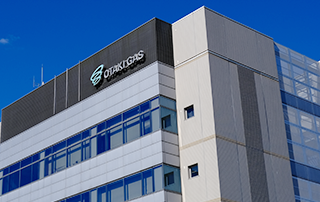Initiatives for
environment-conscious development
Water intake and wastewater management
Compliance with nitrogen wastewater regulations
Since natural gas brine water contains ammonia as a nitrogen component, which causes eutrophication that leads to a red tide (harmful algal bloom), etc., its concentration and emissions at the time of discharge into enclosed water are specified by law. Since it also contains a high concentration of salt and it is difficult to apply general nitrogen removal technology, special provisional wastewater standards have been set in consideration of the importance of domestic resources development.
Research on nitrogen reduction technology
 Anammox facility
Anammox facilityIn collaboration with other companies in the same industry in Chiba Prefecture, we are conducting research on nitrogen reduction technology that can be applied to natural gas brine water. Currently, we are working on a treatment method using a type of microorganism called Anammox bacteria. This technology can convert ammonia into harmless nitrogen gas more efficiently than the conventional microbial treatment method, so it is attracting attention as an energy-saving treatment method, and its application in general sewage treatments is also being considered. Based on the results obtained in joint research with Kumamoto University, we conducted continuous processing experiments for practical use, and after a demonstration test using pilot equipment, we installed actual equipment in 2018.

Controlling subsidence
Initiatives to curb subsidence
 Injection well
Injection well
In Japan, subsidence problems associated with the extraction of groundwater for industrial purposes emerged in various places before the Second World War and continued into the post-Second World War era. Chiba Prefecture was no exception and subsidence problems became apparent in the early to late 1960s. Subsidence is thought to be caused by natural compaction of geological layers, extraction of groundwater and underground resources, and crustal movements. In recent years, the subsidence in Chiba Prefecture has subsided, but as a developer of underground resources, our corporate group is working to control subsidence as a matter of responsibility.
Conclusion of a subsidence prevention agreement with Chiba Prefecture

With the aim of controlling subsidence associated with natural gas development, a subsidence prevention agreement was concluded between Chiba Prefecture and natural gas development companies in the prefecture in 1973. Subsequently, the agreement was completely revised in 1981 to a general agreement based on the reduction of the amount of surface drainage* of natural gas brine water, and a detailed agreement to set the maximum amount of surface drainage has been revised and concluded every five years. Our corporate group will continue to comply with this agreement and strive for environment-conscious development and operations.
- *Surface drainage: The amount of water obtained by subtracting the amount of brine water returned to the underground after separating natural gas, etc. from the amount of natural gas brine water collected from underground.
Joint research with other companies in the same industry and research institutes such as universities
 Global navigation satellite system
Global navigation satellite system
Our corporate group is engaged in joint research with other companies in the same industry in Chiba Prefecture. Specifically, we are working on the subjects such as subsidence observation using satellites and ground subsidence prediction calculation associated with the development of natural gas brine water. Furthermore, in 2006, we started joint research with the University of Tokyo to address technical issues from a more specialized perspective. The results of these studies are presented to academic conferences and other organizations and are regularly reported to Chiba Prefecture as well as its municipalities in the development areas to ensure that the project is carried out with the understanding of the local communities.


